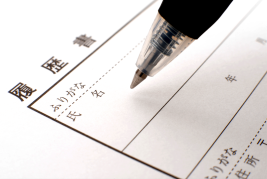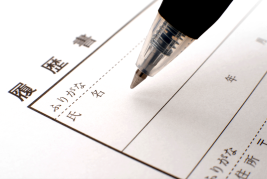Tips for IT engineers to develop apps for smart devices
Foldable smartphones, or simply just “foldables” are currently all the tech world’s rage, as industry giants such as Samsung, Motorola, LG, and Huawei have all produced their versions of the trendy new smartphone.As of the 2nd quarter of 2020, handheld devices such as Samsung’s Galaxy Z Flip and Galaxy Fold, Motorola’s Razr, Huawei’s Mate X, and LG’s V50 ThinQ and G8X ThinQ Dual Screen have dominated the foldable smartphone market. The fleet of products has also garnered high sales and positive reviews from both users and critics, much to the delight of tech brands.Other companies have now seemed to follow suit, with the market leader, Apple, already planning to throw their hat in the ring with a possible foldable iPhone in the future. Some brands like Lenovo and LG have now used the new foldability features to venture into other technological areas like foldable personal computers and foldable televisions.The popularity of foldables in a technological hub like Japan has prompted the country’s top app development companies to strike while the iron’s hot. Developers are now faced with the challenge of placing their best IT engineers to build apps that will ultimately utilize the bendable gadgets’ uniqueness.But what are the challenges that these IT engineers face when creating applications for foldables? What is the role of foldable smart devices in the bright technological future? In this article, we’ll address all of those questions and better understand today’s hottest tech movement.The Challenge for IT EngineersWhile this “foldable” stage of evolution for smartphones and devices is exhilarating for users because of the boundless possibilities it presents, app development companies are also faced with enormous hurdles to create applications that are optimized for foldables.App ContinuityNow that there is a new type of smartphone screen, IT engineers need to develop apps that will present the same experience for all smartphones. IT engineers need to ensure that the applications will be picture-perfect, whether it be on standard screens or foldable ones. Additionally, IT engineers need to prepare apps that will be able to adapt to many resolutions and densities of different screen types.Before, app developers only needed apps that can run smoothly across different kinds of operating systems and devices. Now, they need to consider running apps on foldable screen types as well.Because of foldables, developers now have the added pressure of testing their applications for possible errors and malfunctions and check if the apps can perform on foldable devices.Multi-Resume Split ScreenSince foldable devices are now able to run 2 (and even 3) apps simultaneously, developers will need to optimize apps that can be used concurrently with other apps.The multi-resume split-screen presents a tricky situation for developers. The applications running simultaneously will all be competing for the same core system and will use the same processing power, battery, and memory.Moreover, the likelihood of all running apps on foldable devices using features such as the camera and voice command at the same time is high because developers create these apps with the priority of user interactivity and convenience.Both the app continuity and multi-resume split-screen features will prove to be a challenge not only for app developers, but also for smartphone brands as they have to create handheld devices that can handle the complexity of it all.Factors to Consider When Creating an App for Foldable DevicesApp development companies want to hit a home run and develop the hottest new apps to make their mark in the new foldable smartphone market. At the same time, other already established apps want to build off their success and continue to be profitable under the new trendy devices. App developers need to take note of a few things when creating or sustaining apps for foldables.ResizabilitySince foldables have much bigger screens than regular smartphones, IT engineers must start creating applications with high quality resolutions that will be auto-responsive when displayed on either a full screen or on the multi-window mode.Usability on Both ModesApp developers and IT engineers must ensure that their apps fully-functional in different screen modes for foldable devices. They must also test the applications’ seamless transition from its basic screen and then immediately shifted to the folded version and vice versa.Screen RatiosBecause foldables are a fairly new segment, brands are manufacturing the devices in all shapes and sizes, trying to find the right proportions that will be marketable with users. This forces app development companies to test their apps on various screen ratios to ensure compatibility across all types of foldables.QualitySince more companies are now looking to develop their style of foldable devices, IT engineers must ensure the quality of applications across all types of foldables. Luckily, some emulators can enable software of a particular device to perform the same way on another different or new platform.The Role of Foldable Smart Devices in the FutureAccording to Statista and USA Today, 50.1 million foldable handheld devices are projected to be shipped by 2022, a considerable jump from 2020’s 13.6 million international deliveries. This estimate shows the increase of sales since the tech’s initial conception, and it also exhibits how much faith experts have on the future of foldables.Both consumers and tech aficionados hope that the foldables’ components could be enough to change the global technological landscape. Some of the advantages of foldable devices include:Larger Screen, Smaller SizeMany people own both smartphones and tablets. They use smartphones as a daily device while tablets are for entertainment purposes. Although tablets have proven to be incredible pieces of technology, their size has proven somewhat of an inconvenience for users.Foldable handhelds could eliminate the need to buy the two separate devices because they are combined into one. No longer will you need a tablet to have a better entertainment experience; you can simply unfold your foldable, and voila, you now have a tablet-sized screen at your fingertips. Or just use it as a regular phone, and be able to insert it into your bags or pockets with no issue whatsoever.Ability to MultitaskAs mentioned before, foldables allow users to open 2 or 3 windows at the same time. This enables users to perform 3 different tasks simultaneously.Imagine watching a live sporting event on the first tab, doing some work on a spreadsheet on a separate tab, and still being able to chat with family and friends. Users could now have a new way of saving energy as their television, laptop, and phone needs are jam-packed into one device.Room for Better HardwareSince foldables are much bigger and thicker than conventional smartphones, companies can put better and more efficient hardware into their products.Tech brands can put more hardware like larger dual batteries, which will give the foldables a longer battery life, and better camera sensors for improved photo and video capture.Fresh DesignEver since the launch of the first iPhone and subsequent start of Apple’s phone market dominance, every other brand has been emulating its new product designs.With the introduction of foldables, companies now have more leeway in terms of product design. And seeing as this segment is at its early stages, the room for design development will surely grow in the foreseeable future.ConclusionThe innovations brought about by foldables could likely influence and shape the ever-growing technological market. Every brand will create their versions of the new tech trend, much like how app development companies are going to be competing to develop the benchmark when it comes to foldable phone applications.Because the foldable device movement is just starting, IT engineers will face new challenges in building mobile apps in the coming years. But, rest assured, IT engineers will fix these kinks along the way, just as they are right now.Sources:https://www.forbes.com/sites/moorinsights/2020/02/17/like-it-or-not-the-future-is-full-of-foldables/#6d14c4c27766https://www.mindinventory.com/blog/how-to-develop-apps-for-foldable-smartphones/https://servreality.com/blog/how-to-develop-apps-for-foldable-devices/https://developer.android.com/guide/topics/ui/foldableshttps://mobidev.biz/blog/how-to-develop-apps-for-foldable-dual-screen-smartphoneshttps://buildfire.com/mobile-app-development-trends/https://asia.nikkei.com/Business/Business-trends/Japan-s-suppliers-eagerly-eye-market-for-foldable-smartphoneshttps://japantoday.com/category/tech/samsung-to-launch-foldable-smartphone-in-septemberhttps://www.nippon.com/en/news/yjj2019041001142/sharp-unveils-prototype-of-foldable-smartphone-display.htmlhttps://www.tomsguide.com/us/foldable-phones-release-date,news-28705.htmlhttps://www.pocket-lint.com/phones/news/146826-best-foldable-smartphoneshttps://www.businessinsider.com/apple-iphone-fold-new-patent-foldable-phone-2020-7https://www.forbes.com/sites/adrianbridgwater/2019/05/06/why-foldable-phones-present-flexibility-challenges/#7203fd661f33https://www.mindinventory.com/blog/how-to-develop-apps-for-foldable-smartphones/https://appinventiv.com/blog/app-development-for-foldable-phones/https://thenextweb.com/plugged/2019/02/21/why-you-should-be-excited-for-foldable-phones-and-why-you-shoudnt/















